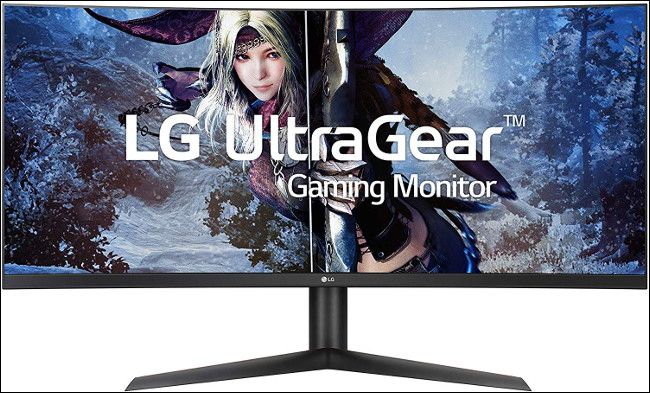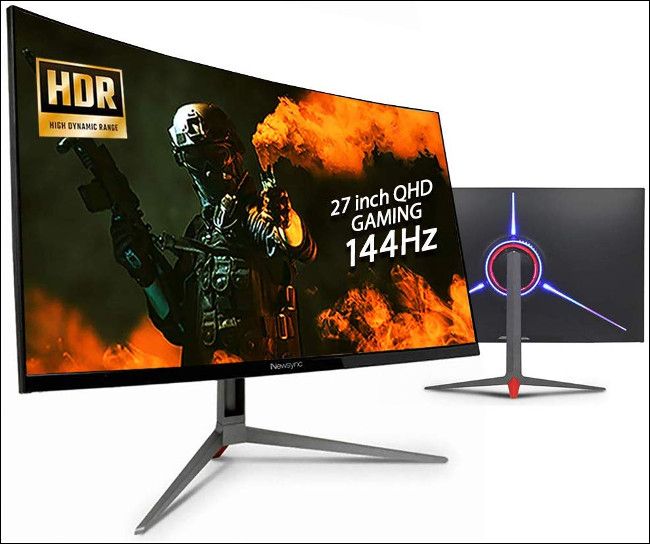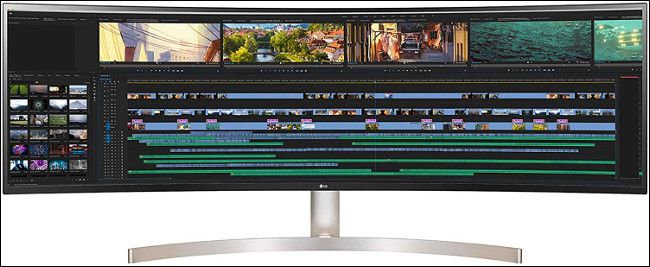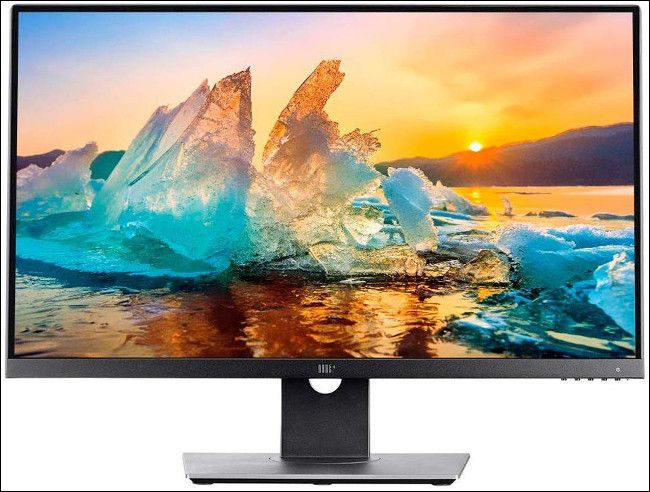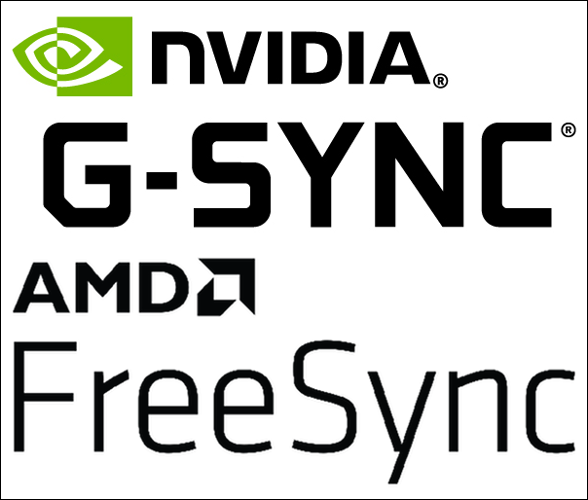Quick Links
Monitor tech has advanced dramatically in the last few years. If you've been focused on replacing other components, you might be long overdue for a monitor upgrade. Here's what you've been missing!
IPS Monitors Finally Hit 1 ms Latency
Formerly, if you wanted an ultra-low-latency monitor, you had to buy a TN panel. Most monitors came in one of three display panel types: TN, IPS, and VA. Each type had pros and cons.
TN panels were favored for their ultra-low, one-millisecond response time. This creates very little perceivable lag between the keyboard and display, which reduces ghosting and motion blur. The only problem is TN panels have ghastly viewing angles and less-than-ideal color reproduction.
IPS panels addressed both those issues. In addition to having a better contrast ratio than most TN panels (which in real-world terms means deeper blacks), they have much better viewing angles. The only problem is, until recently, IPS panels could only manage a latency of 4 milliseconds or greater.
That all changed in June 2019, when LG announced a new range of "Nano IPS" displays at E3. These were the world's first IPS panels with a latency of 1 millisecond. This means gamers no longer have to sacrifice color reproduction or viewing angles if they want a high-performance monitor.
Currently, you can purchase two Nano IPS monitors from LG: the high-end 38-inch UltraGear 21:9 Curved 144 Hz for $1,799, or the more consumer-friendly 27-inch UltraGear 16:9 144 Hz for $499.
Refresh Rates Hit the Roof
The refresh rate is how many times a monitor refreshes per second. A refresh rate of 60 Hz means the monitor updates the display 60 times a second. While 60 Hz is perfectly suitable for general computer use, higher refresh rate monitors are more common than ever before.
Only a few years ago, 144 Hz was the standard gamers were chasing. Now, 240 Hz isn't uncommon, and some monitors even stretch to 280 Hz. When paired with a sufficiently powerful PC, a high-refresh-rate monitor can transform your entire gaming experience.
Smoothness is the name of the game. If you upgrade from 60 to 240 Hz, your new monitor will update four times more often than your old one. This is something you'll notice in virtually everything you do on your machine, from moving the cursor and scrolling web pages to playing games.
Is it a necessity? No. Is it a nice thing to have? Yes. Will you be able to go back to a model with a slower refresh rate? Probably not. High-refresh-rate monitors are most often marketed to gamers, and, particularly, competitive players who will jump at any possible advantage.
Fortunately, you don't have to spend a ton of cash. Cheap TN monitors have some of the highest refresh rates on the market, at the expense of color reproduction and viewing angles. If you're spending more on an IPS panel, make sure the latency is as low as possible (ideally, 1 millisecond) to avoid ghosting or motion blur.
Replace Two Monitors with a Single Ultrawide
Broadly speaking, an ultrawide monitor is any computer display with an aspect ratio of 21:9. For context, traditional widescreen displays have an aspect ratio of 16:9, while the iPad has the old CRT television standard of 4:3.
Thanks to their added width, an ultrawide monitor might be a suitable replacement for two "standard" monitors. Because you'll lose the bezel in the middle of the screen, you might find the experience more immersive thanks to the curved design.
Ultrawide monitors have never been more popular or affordable, thanks to shrinking production costs. You can grab a decent 21:9 ultrawide, like the Acer XR342CK 34-inch 1440p 100 Hz, for under $700 at this writing. You can save even more money if you're not bothered about things like ultra-low latency.
It's possible the 21:9 simply isn't wide enough for you, though. Maybe you want to replace three standard monitors, and you've got the cash to splash. In that case, try a 32:9 super-ultrawide, like the 49-inch 49WL95C-W from LG, which can be yours for just shy of $1,500 at this writing.
Samsung, Dell, ASUS and other manufacturers have all entered the ultrawide space in the last year or so. These wider-than-usual monitors tend to sacrifice high refresh rates and ultra-low latency in favor of screen real estate, so keep that in mind if you're looking for a gaming monitor.
If you go the ultrawide route, there's one more thing to remember, and that's desk space. If you're going to use the stand that comes with the monitor, you need a desk with plenty of width and depth. An easy way to get around this, though, is to place your monitor on a VESA mount, which should also reduce monitor shake (and, yes, these things really shake).
The Price of 4K Monitors Has Dropped Significantly
If you want a large monitor, 4K is the way to go. Not only do you get higher resolution, which means more screen real estate, but you'll also be able to push the monitor size to 27 or 32 inches without sacrificing image quality. Thanks to higher pixel density, the display will look sharp and individual pixels will be hard to see.
If you're on a budget, you don't have to pass on 4K, provided you're willing to make a few sacrifices. At the budget end of the spectrum, you're looking at a response time of around 5 milliseconds and refresh rates of 60 Hz. For example, the budget brand Monoprice sells a 27-inch 4K HDR400 Certified Display for less than $400 at this writing.
Buying on a budget means there are all sorts of other things to watch out for, though, including color accuracy. If you'll be using the monitor for any serious color-work, like photo editing, video color grading, or artwork, you should be calibrating your monitor with a color calibration peripheral, anyway.
If you spend a little more, check out something like the LG 27UK850, a 4K display that's HDR10-certified. It even uses a modern USB-C connector. For around $500, you'll get superior brightness, great color accuracy, and tighter quality control than some of the other cheaper brands.
Just keep in mind, even the best 4K monitors still compromise when compared with 1080p and 1440p models. Take the Acer Predator X27, for example; this $1,800 monitor has a 4 millisecond response time with a 120 Hz refresh rate.
FreeSync and G-Sync Is Everywhere Now
FreeSync and G-Sync are two similar technologies that reduce screen tearing. "Screen tearing" refers to the unsightly horizontal lines that appear across a screen when the refresh rate is out of sync with the computer. When the refresh rate adapts on the fly, this is no longer an issue because the display and computer will be synced.
Despite similar goals, the two technologies are implemented differently. G-Sync is a proprietary technology, which means it's owned and closely guarded by NVIDIA. It's implemented with a dedicated hardware chip in the monitor, which takes the strain off the GPU.
FreeSync, on the other hand, is AMD's open technology. It doesn't use a chip. Instead, it relies on a technology called Adaptive Sync that's built into the DisplayPort standard. It also requires more effort on the GPU side than G-Sync does. You also have to use DisplayPort (not HDMI) to take advantage of it.
More monitors use FreeSync since it's easier to implement and there's no NVIDIA tax to pay. However, FreeSync can lead to ghosting on some models (this problem is rarely seen on G-Sync monitors). Both implementations significantly reduce screen tearing, though, and they're a considerable improvement over the outdated V-Sync.
If you're a gamer, you'll probably want a FreeSync or G-Sync certified monitor. The good news is the technology is finding its way to a vast range of models, at all price points. If you're on a budget, you're almost certainly looking at a FreeSync monitor. If you have more to spend, though, you'll get better performance from a G-Sync monitor.
Is It Worth Upgrading? Yes!
Upgrading is about more than simply increasing raw power. Occasionally, you have to spend money outside the case. A new monitor can reinvigorate your whole setup and make you more productive. It also provides a far more immersive experience, whether you're playing games, editing photos, or simply browsing the web.


